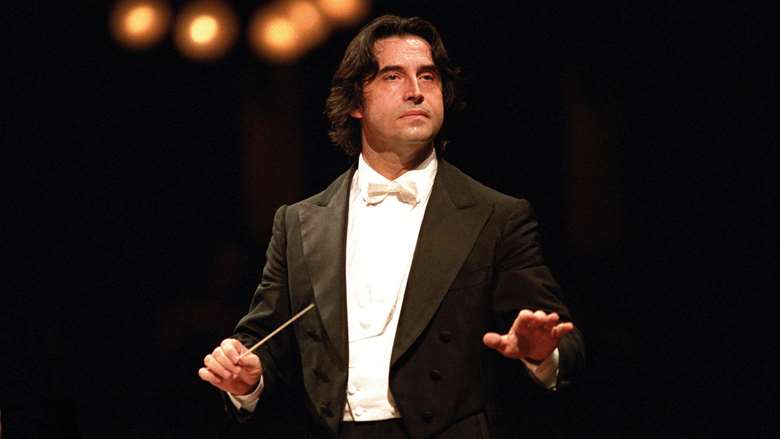Bruckner's Symphony No 2, an introduction by Riccardo Muti
Monday, February 19, 2024
Riccardo Muti finds that this, like all of Bruckner’s symphonies, carries a message for the soul

The first memorable Bruckner performance I heard was in London while I was Chief Conductor of the Philharmonia Orchestra back in the 1970s. The Berlin Philharmonic was on tour with Karajan performing Bruckner’s Eighth Symphony at the Royal Festival Hall. It was an incredible performance; I remember afterwards being almost at the point of throwing away my baton! Karajan’s depth of understanding of Bruckner was unique. I would call it a natural interpretation, with that most difficult thing in art – a quality of simplicity. It was after hearing this Bruckner Eighth with Karajan that I decided to conduct my first Bruckner symphony, the composer’s own First, in Florence.
We often feel that a symphony’s first movement is the real inspiration behind the work and that the finale is intelligent but less inspired. However, this is not the case with the finale of Bruckner’s Second Symphony
Bruckner is a ‘Romantic-baroque’ composer, and, most importantly, he was Austrian, not German! He comes from Schubert, the composer who is the soul of Austria. Bruckner’s symphonies are another Austrian treasure that are a gift to the world. When I went to St Florian Monastery, near Linz, where Bruckner was a choirboy and later organist, I heard the ‘Bruckner’ organ. It’s important to hear it, as it helps with understanding Bruckner’s music. And here I’m thinking not only of the ‘cathedral of sound’ that’s mentioned so often, but also of sonority. What made Karajan a great Bruckner conductor was his ear for the colour of the sound.
Also in St Florian, I had the privilege of visiting the famous crypt and seeing Bruckner’s coffin. That sense of mortality I had is something I also experience strongly at my birthplace in Naples.
I had been conducting the Vienna Philharmonic since 1971. The orchestra had become comfortable with my interpretations of Bruckner and in 2016 suggested that I direct the Second Symphony at the Salzburg Festival – despite the fact that I hadn’t previously encountered the work. It’s a huge change from the First Symphony. There’s a new concept in its spirituality, its shape and its length – it’s over an hour long!
The first difficulty is deciding which version to use. Bruckner took so much advice from his colleagues that he was constantly revising his symphonies. I normally prefer the Leopold Nowak editions, which is what I decided to use for the Second.
In the first movement the pauses are important. In Bruckner, pauses must be full of tension – never dead. An interpreter feels two types of silence: the silence of an audience that is asleep, and the silence of an audience that is concentrating. This second kind of silence is full of electricity, which in turn encourages the performance. A pause is a moment of reflection and deep thought. It reflects the spiritual tension you have created – a spiritual bridge from the note before to the note after. All too often, a gesture from the conductor ruins that.
In the second movement, the counterpoint and harmony are very complex. Bruckner was the master of counterpoint in which every part must sing – canta! And that’s not only the main melody, but all the other lines, too.
Bruckner was also the master of the scherzo, which is a continuation of Beethoven. It is also a revelation of the soul of Austria, of nature, and of Bruckner’s sense of gratitude to the Creator. Think about the nature he had around him when he was a child walking to school through the woods. There is a sense of wonder here, which you find in all his symphonies.
We often feel that a symphony’s first movement is the real inspiration behind the work and that the finale is intelligent but less inspired. However, this is not the case with the finale of Bruckner’s Second Symphony. Intentional or not, there are references to Wagner’s Das Rheingold and – with that trumpet melody – Beethoven’s Fifth Symphony. As to the movement’s climax, it is very important how you build it. Often when conductors see ‘crescendo’ they have already reached triple forte! Arturo Toscanini always said that ‘crescendo’ was only the beginning of the indication. To make a real crescendo is an art. With Bruckner you must take care of every detail and every dynamic. Climaxes should have grandeur, not aggression; in his music, fortissimo is not simply a manifestation of volume.
Every Bruckner symphony is a conversation with God which carries a message for the soul. The masterpiece that is the Second Symphony is no exception.
Interview by Henry Kennedy
This article originally appeared in the January 2024 issue of Gramophone. Never miss an issue of the world's leading classical music magazine – subscribe today

















